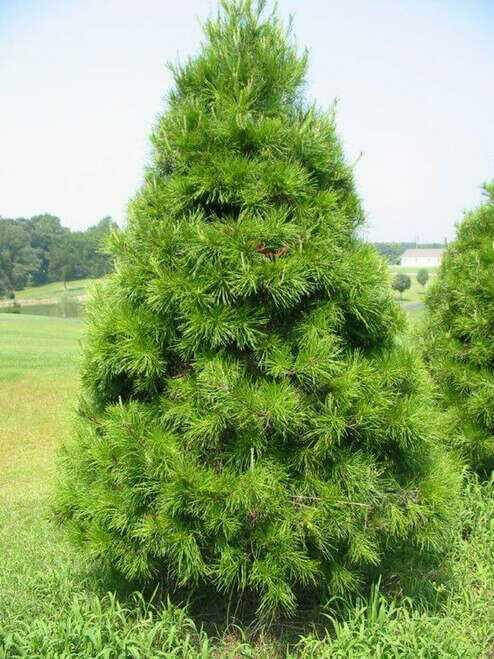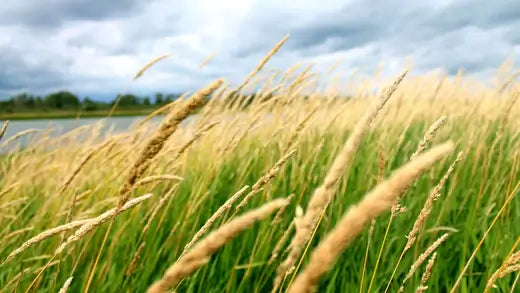A Focus on Pine, Red Maple, Virginia Pine, Silver Maple, Pin Oak, and Red Oak
The world's forests are under siege, facing threats from deforestation, climate change, and habitat degradation. Logging activities, in particular, have left vast expanses of forests devoid of their natural biodiversity, rendering them fragile ecosystems in dire need of restoration. One promising approach to accelerating logged forests' recovery is strategically replanting diverse tree seedlings, including pine, red maple, Virginia pine, silver maple, pin oak, and red oak. These species, each with unique characteristics and ecological roles, play a vital role in rejuvenating logged ecosystems and enhancing their resilience to environmental challenges.
Pine Seedlings: The Hardy Pioneers
Pine trees are often the first choice when restoring logged forests due to their resilience and adaptability. With their needle-like leaves and evergreen nature, pine seedlings can thrive in various soil conditions and climates. Their ability to establish quickly and outcompete other vegetation makes them valuable pioneers in restoration. Varieties like the Virginia pine (Pinus virginiana) are especially well-suited.
Virginia Pine Seedlings: Restoring the Eastern U.S.
Virginia pine, native to the eastern United States, is a crucial player in reforestation efforts in this region. These seedlings exhibit rapid growth and are well-adapted to diverse soil types. Their presence helps recreate the dense canopy that once graced these forests, providing shade and moisture retention necessary for other species to flourish.
Red Maple Seedlings: Adding Diversity
Red maple (Acer rubrum) is a deciduous tree native to North America, and it is an essential component in efforts to restore forest diversity. These seedlings bring a burst of color in the fall with their fiery red leaves, making them an attractive choice for aesthetic and ecological reasons. Red maple's adaptability to various soil types and moisture conditions makes it an excellent companion to pine seedlings in logged forests, enhancing biodiversity and a habitat for wildlife.
Silver Maple Seedlings: Enhancing Wetland Restoration
In areas where waterlogged or riparian ecosystems have been disturbed by logging, silver maple (Acer saccharinum) seedlings offer a valuable solution. This tree species is well-suited to wetland restoration, as it can tolerate inundation and provides critical habitat for aquatic species. By planting silver maple alongside other tree varieties, restoration efforts can enhance the resilience of riparian ecosystems and promote water quality improvement.
Pin Oak Seedlings: A Beacon of Resilience
Pin oak (Quercus palustris) seedlings are champions of adaptability, able to thrive in a wide range of soil conditions, from wetlands to uplands. These oaks are known for their distinctive, deeply lobed leaves and provide vital ecosystem services, including stormwater management and habitat for wildlife. In logged forests, pin oak seedlings can act as a stabilizing force, promoting soil retention and preventing erosion.
Red Oak Seedlings: Strengthening Canopy Diversity
Red oak (Quercus rubra) seedlings play a crucial role in diversifying the forest canopy. Their towering stature and impressive canopy cover provide shade and create diverse microenvironments within the forest. As they mature, red oaks contribute to the complex web of interactions among plants and animals, enhancing the overall ecological health of restored forests.
The Power of Diversity in Forest Restoration
Diverse reforestation strategies, such as planting a combination of pine, red maple, Virginia pine, silver maple, pin oak, and red oak seedlings, have several benefits for logged forest restoration:
- Enhanced Resilience: A diverse array of tree species strengthens the forest's resilience to pests, diseases, and environmental stressors. Different species have varying tolerances and vulnerabilities, reducing the risk of large-scale forest losses.
- Improved Ecosystem Services: Diverse forests provide a more comprehensive range of ecosystem services, such as carbon sequestration, air and water purification, and habitat provision for wildlife. This multifunctional approach supports a more sustainable and balanced ecosystem.
- Habitat Restoration: Each tree species attracts a unique community of insects, birds, and mammals, restoring a diverse and functioning ecosystem. These restored habitats can aid in the recovery of endangered or threatened species.
- Aesthetic Appeal: A mix of tree species adds visual diversity to the forest, making it more aesthetically pleasing and inviting for recreation, ecotourism, and educational activities.
- Climate Resilience: Diverse forests are better prepared against the challenges posed by climate change, such as extreme weather events and shifting temperature and precipitation patterns. The various tree species may respond differently to changing conditions, increasing the likelihood of long-term forest health.
Challenges and Considerations
While diverse seedling replanting is a promising approach to accelerate forest restoration, there are challenges and considerations to keep in mind:
- Site Suitability: Careful consideration of soil type, moisture levels, and local climate conditions is essential when selecting tree species for replanting. Not all species are suitable for every site.
- Invasive Species: Introducing non-native species into an ecosystem can have unintended consequences, including the displacement of native plants and disruption of ecological relationships. It is crucial to prioritize native species in restoration efforts.
- Maintenance and Monitoring: Post-planting care, including protection from wildlife browsing and invasive species, is critical to the success of restoration projects. Regular monitoring ensures that the desired outcomes are achieved.
- Genetic Diversity: Maintaining genetic diversity within tree species is vital to their long-term resilience. Seed sources should be carefully selected to promote genetic diversity and adaptability.
Replanting diverse seedlings, including pine, red maple, Virginia pine, silver maple, pin oak, and red oak, holds immense promise for accelerating the restoration of logged forests. These species bring various ecological benefits, from rapid growth to habitat provision, enhancing restored ecosystems' overall health and resilience. By carefully selecting and maintaining a diverse mix of tree species and addressing site-specific considerations, we can contribute to preserving and regenerating our precious forests, ensuring they thrive for generations to come. Forest restoration is about planting trees and creating thriving, biodiverse ecosystems that benefit nature and people.


















































